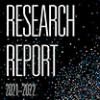While natural language processing may not have much name recognition among the general public, many people rely on it every day. Using Google to find information online? The search engine employs natural language processing to comb through and analyze massive numbers of webpages and return the most relevant answers.
Press Releases
Primary tabs
The Ecosystem for Research Networking (ERN), a team consisting of members from Rutgers University, MGHPCC, Omnibond, Virginia Tech, UMass Amherst, Penn State University and Pegasus, is developing a way to use scientific instruments remotely online. The project seeks to improve access to high-cost, specialized equipment to advance national research initiatives.
When he joined the Ohio University faculty in 2015, Sumit Sharma found a new application for his expertise in molecular modeling and simulations: understanding pipeline corrosion.
The university’s Institute for Corrosion and Multiphase Technology investigates the causes of—and solutions for—this costly problem for the oil and gas industry. Although energy companies had been adding corrosion inhibitors to pipelines, the industry wanted to learn more about how the inhibitors work at the molecular level, Sharma said.
Annual publication highlights how OSC serves the needs of the state and national high performance computing community with new and expanded resources and services.
The Ohio Supercomputer Center (OSC) has released version 3.0 of Open OnDemand, a web-based client portal used by high performance computing (HPC) centers around the globe, to offer clients easier ways to customize and manage their work.
With funding from the National Science Foundation (NSF), OSC developed and launched version 1.0 of Open OnDemand in 2017. The portal is based on OSC’s original OnDemand gateway, which allows clients to seamlessly connect to the Center’s supercomputing clusters, submit and monitor jobs, manage files and run applications.
Chris Hadad has been a client of the Ohio Supercomputer Center (OSC) for over two decades and leads one of the most active accounts. A professor of organic chemistry at
The Ohio State University, Hadad is currently developing medical countermeasures against organophosphorus chemical nerve agents used in chemical warfare and as pesticides in agriculture.
Case Western Reserve University is one of the most research-intensive higher education institutions in the state of Ohio. Ranked R1 by the Carnegie Classification of Institutions of Higher Education, during fiscal year 2021 it attracted more than $390 million in competitive sponsored research projects.
The Ohio Supercomputer Center (OSC) is hosting the Spring 2023 meeting of the Midwest Research Computing and Data Consortium (MW-RCD) March 2-3.
With the COVID-19 pandemic presenting an ongoing global challenge, Xiche Hu’s lab at the University of Toledo is taking a closer look at the mutations of the coronavirus.
For more than 20 years, Hu’s lab has been researching an issue known as molecular recognition, which is how two molecules locate each other, and bind together to perform a biological function. When the COVID-19 pandemic started, Hu wondered if his molecular recognition expertise could help scientists understand how the coronavirus identifies the right receptors to bind to in the human body to trigger infection.
Cotty Fay Marine Design is a small firm in Washington state that uses its engineering expertise to improve the design and performance of products, ranging from the mechanical parts on watercraft to the manufacturing equipment used by various industries.
Company owner Endicott (Cotty) M. Fay employs computational fluid dynamics to simulate how product designs may behave in—and impact—the environments in which they are intended to operate.





